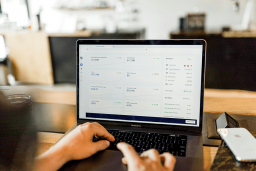Cryptocurrencies are becoming increasingly popular every year. Cryptowallets are indispensable for their proper development and functioning. They provide the necessary Web3 infrastructure, without which crypto adoption will not proliferate. The more easy-to-use crypto wallets are, the easier it is to attract new users in the industry. The same applies to crypto wallet functionalities and features. In this article, we will discuss a step-by-step guide on how to develop a crypto wallet in 2024.
Key points
The Evolution of Crypto Wallets
Bitcoin appeared 15 years ago, and the blockchain has gone through 4 periods of iterations. Crypto wallets have also gone through 3 periods of evolution. They have evolved from single-asset wallets and single-chain wallets to multi-chain and multi-asset wallets and from single money transfers to all-in-one wallets.
Here is a more detailed evolution:
- 2009-2012. With the advent of Bitcoin and blockchain technology, wallets began their initial development phase.
- 2012-2020. The rise of hackers and Ethereum brought about a surge in smart contract wallets. This period saw a significant increase in transaction activities, the popularity of DeFi liquidity mining, and the number of crypto wallet users surpassing 50 million. Crypto wallets experienced a phase of rapid expansion.
- 2021 to Present. The emergence of NFTs, DAOs, public blockchains, and Web 3.0 applications has transformed the industry. Crypto wallets have become the go-to solution for storing assets and conducting transactions. Cross-chain transaction support has become a crucial factor for users when selecting a wallet. Nowadays, the focus of crypto wallets is on enhancing interactive features and improving user experience.
Crypto wallets can be divided into decentralized and centralized wallets, depending on whether they hold private keys. Decentralized wallets can be divided into cold wallets and hot wallets, depending on whether they can be connected to the Internet. According to different storage media, cold wallets can be divided into hardware wallets, paper wallets, etc. Hot wallets can be divided into cell phone wallets, web wallets, etc., according to their operating environment.
We also recommend you read our article Blockchain for Real Estate: Use Cases and Examples.
Crypto wallet market statistics
We want to emphasize 3 crucial facts regarding the current crypto wallet industry.
Users grow: the market share is rising simultaneously
The significant rise of digital assets has driven the market demand for secure storage of digital assets as well as on-chain activities. The digital wallet industry has ushered in a growth opportunity with a large number of developers as well as an influx of funds.
Triple-A says the average cryptocurrency ownership rate is 6.8% in 2024, with more than 560 million people using crypto assets globally. According to Polaris Market Research, the number of crypto wallet owners reached 84.02 million in 2022, up from 76.32 million in 2021.
From the perspective of future development, crypto wallets will not only serve as the entrance to the crypto world but also take on extended functions such as digital asset management and social interaction. Their importance is self-evident.
Gradually changing from customer-centric mode to revenue-centric mode
The business model of a crypto wallet has been evolving with its development. When crypto wallets, as tools for storing users’ private keys, focused on accumulating users and developing their fund deposit function, their profitability was limited, and they could not generate good income.
Cryptocurrency wallets break the traditional business model and launch value-added services (financial products, PoS mining, trading, asset aggregation, market information, etc.) to generate revenue and profit. They also start advertising and other traffic-earning methods to increase revenue.
Investment institutions favor crypto wallets as Web3 infrastructure
Crypto wallets are one of the main ways institutions invest in crypto. In the first half of 2022, the total financing in the crypto wallet industry amounted to $400 million, far more than in other fields. Data shows that the amount of investment received by crypto wallets has continued to grow over the past years, with global crypto wallet financing climbing from $200 million to $900 million between 2018 and 2021.
The Wallet Development Process
Here is a step-by-step cryptocurrency wallet development process.
Discovery phase
The journey of developing a cryptocurrency wallet starts with a solid idea. The cryptocurrency industry is still evolving, presenting numerous opportunities derived from personal experiences and challenges. At this step, we achieve 2 important points:
- Identify a problem and solution. As people interact with various cryptocurrency platforms, they encounter issues that might spark new product ideas. Conduct competitive research to see if solutions already exist. If they do, analyze how you can improve upon them and make your product more appealing.
- Validate your idea. Suppose you want to develop a wallet that not only handles transactions but also tracks the entire portfolio, including staked coins. Such specific functionalities can differentiate your product. We also gather feedback from potential users to understand their pain points and preferences. We then use this information to define the features your wallet should have.
At this step, we also choose a suitable development language for developing a blockchain wallet. Currently, the most popular development languages are C++, Java, Python, JavaScript, and so on. Among them, C++ and Java languages support the most blockchain wallet types, so it is recommended to use these two languages for development.
Smart contract development
Smart contracts are the backbone of a secure and efficient digital wallet. Our process includes:
- Designing robust smart contract architectures tailored to your wallet’s requirements
- Writing secure and efficient code using industry best practices
- Implementing and testing smart contracts on various blockchain networks
- Conducting thorough audits to ensure security and compliance
- Deploying smart contracts on the mainnet after rigorous testing
Golang and Solidity (at a minimum) will be used to develop smart contracts. This is if your crypto wallet will connect with DeFi apps.
UX/UI/CX design
User experience is paramount in wallet development. Our design phase focuses on:
- Crafting intuitive and visually appealing user interfaces
- Ensuring seamless user experiences across all devices
- Conducting user testing and feedback sessions to refine designs
- Implementing user-centric features to enhance customer satisfaction
- Creating interactive prototypes to visualize the user journey
UX is now a primary focus in the crypto market for any project. The easier it is to use your Web3 project, the higher your chances for success. This is why you must work with experienced Web3 designers with several projects behind their shoulders. We at SoloWay Tech have such experts.
Backend and frontend development
Building a development environment is the next step in developing a blockchain wallet. The development environment includes development tools and a blockchain node environment. Currently, the more popular development tools are Visual Studio Code, Eclipse, and so on. The blockchain node environment can use open-source blockchain node software such as Bitcoin and Ethereum.
Writing wallet code is the core of developing a blockchain wallet. Before writing wallet code, choose a suitable wallet development framework based on the development language and blockchain protocol. Commonly used development frameworks include the Bitcoin wallet development framework Bitcoinj, the Ethereum wallet development framework Web3j, and so on.
Testing & Deployment
After completing the wallet code writing, testing, and deployment are next in developing a blockchain wallet. In the testing process, different transaction scenarios must be simulated to ensure the stability and security of the wallet function. In the deployment process, we deploy the wallet code to the production environment and configure the server environment.
Release, support, and upgrade
Finally, we prepare for the public release and ongoing maintenance of your wallet:
- Upload your app to the App Store and Google Play.
- Transition from test blockchains to live networks.
- Stress test your servers to handle user influx.
- Release the app to a limited audience initially to gather performance data.
- Be ready to address feature requests and improvements.
We also advise our clients to continuously monitor and refine their wallets based on user feedback. Ongoing updates and maintenance are necessary to ensure a smooth user experience.
Why choose SoloWay Tech as a cryptocurrency wallet development company?

SoloWay Tech is a Ukrainian software development company with expertise in numerous domains, from EdTech to blockchain solutions development. Why you should choose crypto wallet development at SoloWay Tech:
- Expertise. We have been working in the blockchain industry since 2018 and have gathered a reliable team of over 20 specialists with extensive experience in this area.
- Relevance. We follow industry trends, communicate with leading experts, and attend thematic conferences in different countries.
- Effectiveness. We delve into the business goals of the project. We work out the task comprehensively. We select the best options to achieve the result.
- Transparency. We provide access to our system for tracking work and generate monthly reports on each plan item.





